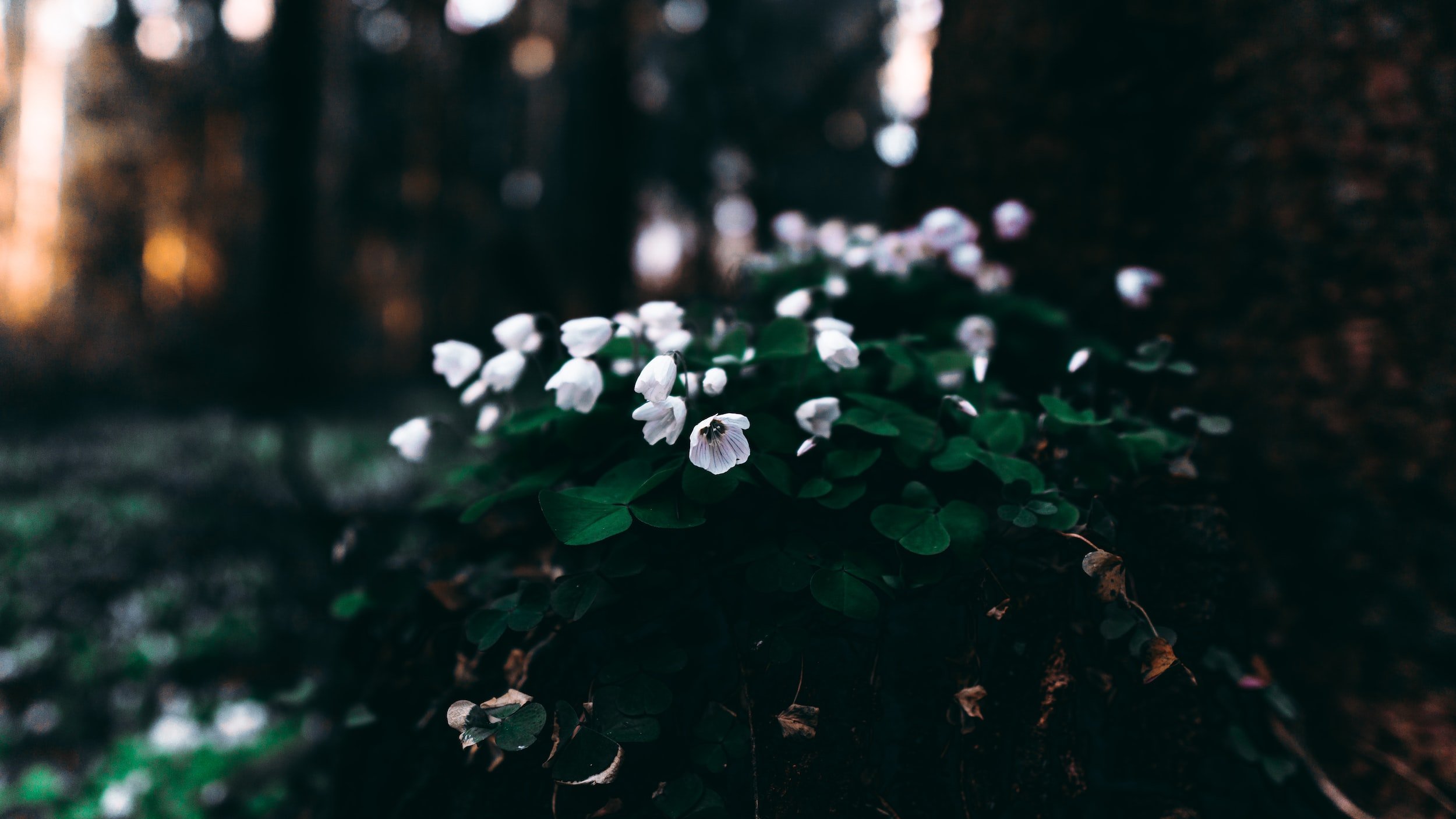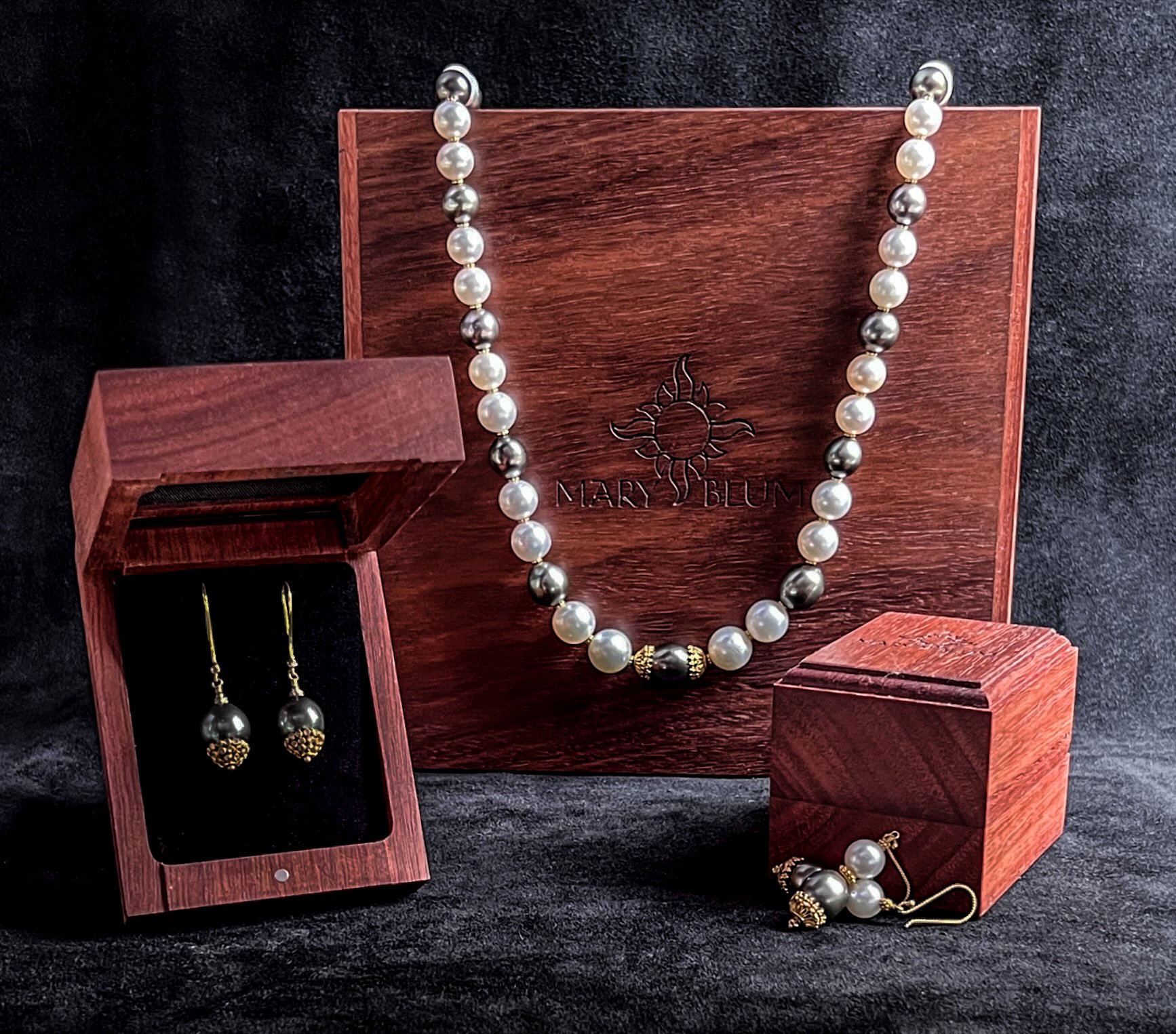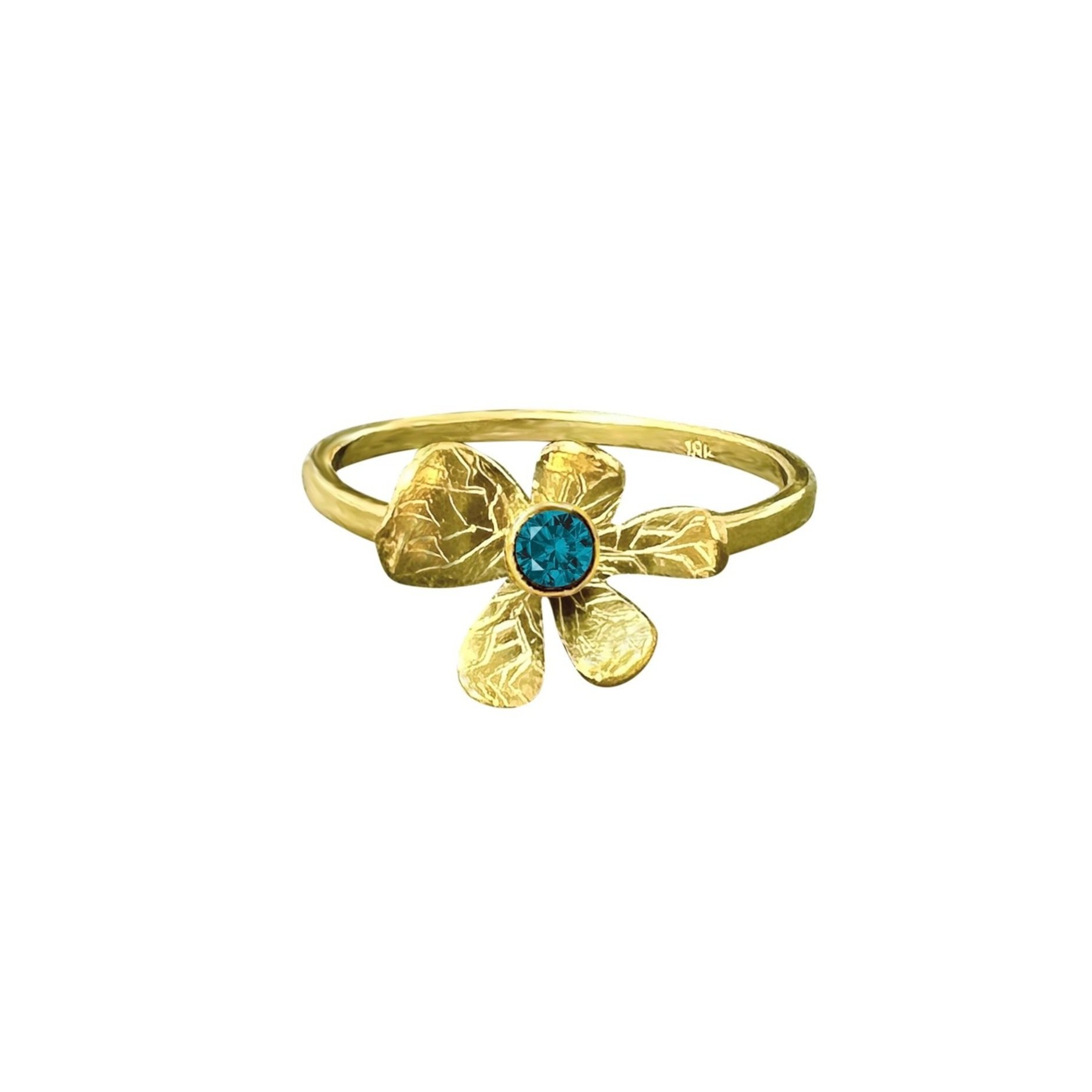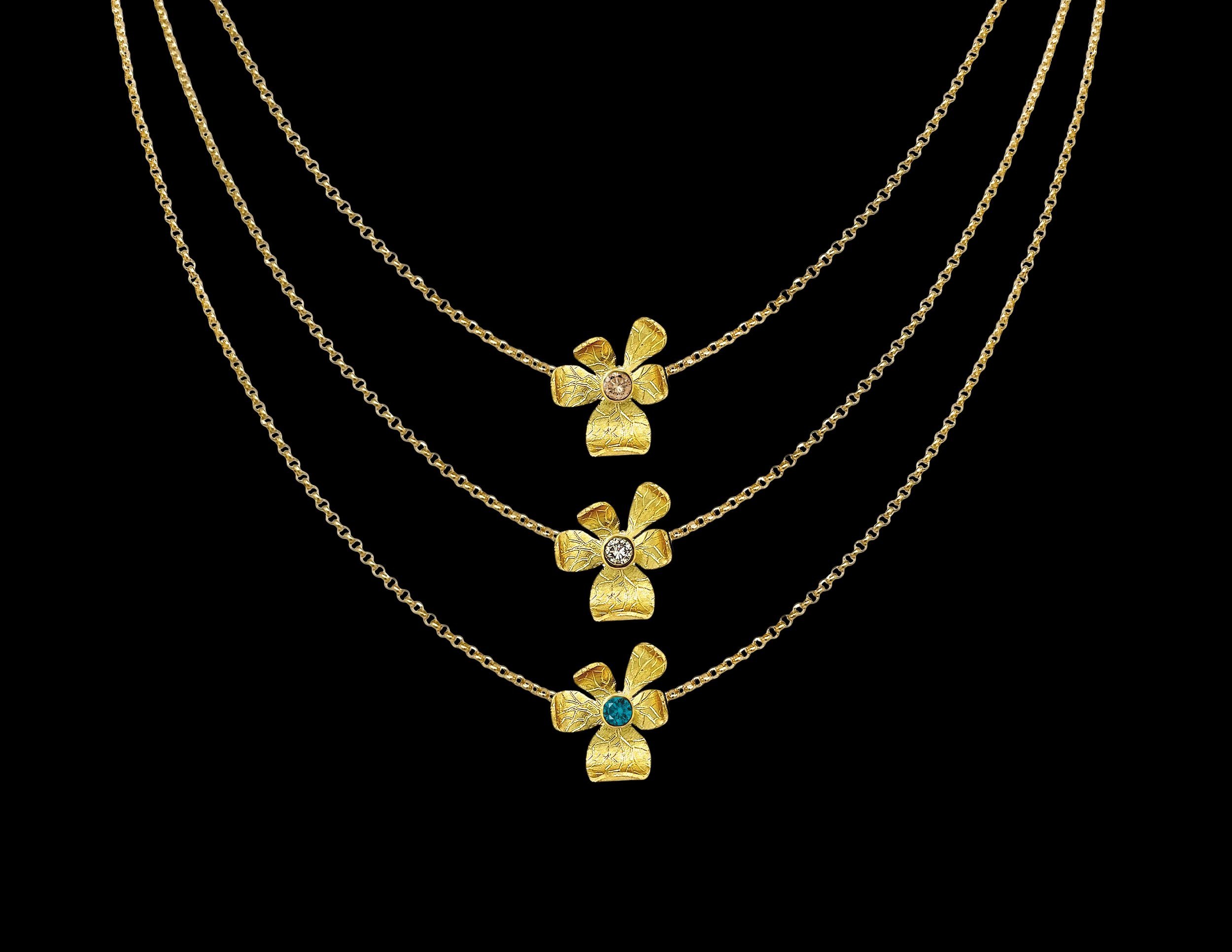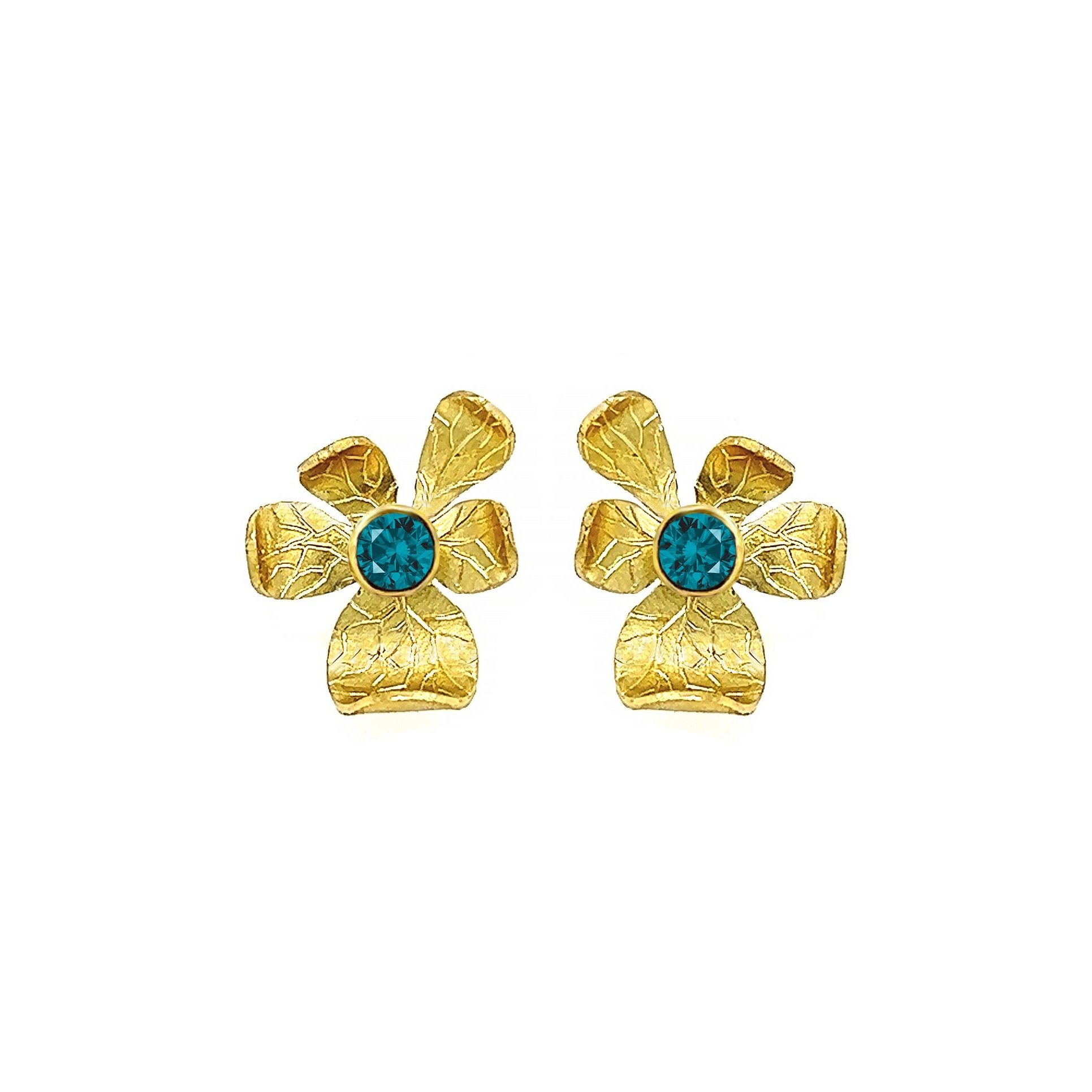Sustainability Is the Gold Standard for Jewelry
One Goldsmith’s Commitment to Her Eco-Conscious Brand
Wood Sorrel at First Light
Commemorating Earth Day April 2023
April 22 is Earth Day, an invitation to set aside the daily hum of living on this planet in order to actually focus on its needs, to be attentive to and aware of our Earth in a way that we are often unable to be moment by moment. To be sure, within our intricate, shared humanity, we honour our planet in different ways, both small and large: from those who recycle and compost their leavings to those who fight for environmental reform at the international level, each person's actions count. Each plastic not chosen, each piece of paper recycled, each barrel of rain water collected and released, helps. I often think about what I want my sons to inherit from me as I try to live in some small service to our home, and what I come up with are habits of stewardship, an eco-conscience, if you will, on a planet inhabitable and hospitable to all forms of life.
Sunrise over Belvedere Island
My Personal Commitment to Sustainable Practices
As a goldsmith, I am deeply committed to keeping my footprint as ecologically light as possible in all areas, from the acquisition of raw materials to the hand-fabrication of pieces, from the disposal and/or recycling of materials utilized in my fabrication process to the packaging and shipping of finished jewels to my clients. I understand viscerally that this requires education, investigation and vigilance on my part. I have had to ask questions and test easy answers; I have developed relationships with trusted suppliers whose business practices in the world of stones and metals are ethical and transparent regarding sourcing and production. I continue to examine how I can tighten my own chain of sustainability, by finding methods of production that leave behind clean waste, less waste, reusable waste. Even with something as simple as moving from plastic bubble wrap to recycled and recyclable brown paper for nestling jewelry for shipping, the process of being aware and mindful never ends.
I perhaps first became aware of the way in which my daily life impacts the earth when I was in my early 20s, and Los Angeles became one of the first cities in the United States to pilot a city-supported recycling program. The program wasn't comprehensive or complete, but through the process of sorting my household waste, I was shocked to see how much of what I used wasn't recyclable. That knowledge made me uneasy, and that unease pushed me to make more conscious choices about what I consume and what I leave behind. Now, decades later, I continue that personal commitment to minimizing the impact my daily life has on the planet by assiduously cleaning, separating and sorting recyclable and compostable materials each week, and by being seeking ways to make that process as complete as possible, both in my personal life and at my bench as a goldsmith.
Mt. Tamalpais and the Corte Madera Creek Watershed
The Process of Sourcing Gemstones and Precious Metals
When sourcing raw materials, I begin whenever I can with 100% recycled gold and silver from refiners who are SCS-certified for their production of recycled metals, a process that takes into consideration not just the source of the metals but also the ways in which those metals are refined and the waste from refining is processed. When I utilize prefabricated findings, such as chain or earring backs, I procure those findings from trusted sources that are transparent as to the origin and creation of those findings, and, whenever possible, I strive to ensure that those, too, are made from recycled metals and fabricated by craftsmen earning living wages in safe working conditions. While I cannot guarantee that every finding is made of recycled metal, by investigating the nature of the findings through my sources, I do feel confident that each piece is made with intention and attention to the human behind it. Finally, when I find myself with scrap metal left over from my fabrication of jewelry, I either remelt it myself to roll out into new sheet or wire, or I return it to my refiner to become part of the recycled metal stream that provides refreshed metals to goldsmiths worldwide.
Similarly, over the years, I have developed relationships with sources for gemstones and pearls, from individuals who work directly with small stone producers and pearl farmers to larger companies that serve the wider jewelry industry. Through these relationships, I strive to acquire stones and pearls that are ethically sourced with regard to origin, production and sale. Regardless of place of origin, all of my diamonds are guaranteed to be conflict-free in accord with the Kimberly Process; many of them are of United States or Canadian origin and/or recycled.
Stream of Rose Cut Opals from Wollo Province, Ethiopia
Again, just as with prefabricated findings, while I cannot literally trace every stone or pearl I use, I am diligent about asking questions, following through by supporting suppliers who answer those questions honestly and with integrity, and assiduously avoiding stones that come from conflict-ridden places in the world known for human-rights abuses. It has taken time to develop these relationships and to research my stones, but I am delighted to spend that time and to pay a premium for gemstones that are as transparent as possible with regard to origin. If you have a few minutes, and are interested in watching the physical journey of a woman who sources her own stones in person, I highly recommend the award-winning short 2019 documentary, Chasing Color: A Gem Trader's Journey, directed by Rob Himebaugh. In addition to being a film of beauty, it also tells an incredible story of the people behind the stones.
Recyclable Packaging and Renewable Wood Heirloom Boxes
Beyond the creation of the jewelry itself, I am also aware of the impact of waste in shipping finished pieces to my customers. From size of container to plastics used for cushioning, I evaluate everything in order to minimize its presence in the waste stream. From small kraft-paper gift boxes for in-person events to matte black steel hinged tins for shipped items, from recycled brown paper instead of plastic bubble wrap to linings of recycled paper shreds in place of synthetic batting, I work to ensure that my jewelry arrives safely and that my packaging and shipping resources are as reusable, recyclable and/or compostable as they can be.
Most recently, I formed a relationship with a small company in New Zealand that hand-crafts heirloom jewelry gift boxes from sustainable and renewable woods. These boxes, made by hand in small batches at GIVE, are beautiful in and of themselves, but they also honour the bounty of our earth that manifests itself in jewelry and the skills of the people who gift us with their work. Know that individual jewelry items of $1000 or more will ship to you in one of these treasure boxes.
Sustainable wood heirloom boxes by GIVE, New Zealand
A Mission to Empower Women, Build Communities and End Poverty
Moving from the micro of a small, beautifully crafted wooden box to the macro of shared humanity and world stewardship, I think of Nuru International, an organization founded by Jake Harriman, a former Marine who concluded after his decorated and long term of service across the world that, in order for global peace to become a reality, extreme poverty must be eradicated. I only know about Nuru International because the schools where I teach invited him onto campus perhaps a decade ago to speak to our students. Mr. Harriman, an incredibly impassioned speaker, lit the fire of change in our middle school students by allowing them to see how they, too, could champion individuals and communities physically far from our own yet tied to us by virtue of their humanity.
Mr. Harriman's guiding philosophy for the foundation of Nuru International was the empowerment of people, men and most especially women with small children, in Africa, not just through resources provided but through the collaborative involvement of the local people to effect lasting change in landscapes facing extreme poverty, brutal climate change and state fragility. Nuru's mission is not about dropping in to distribute goods in an emergency, but rather about arriving with resources and support that honour the self-identified needs of the people living in the community. Specifically, by empowering the women in the community to see themselves as leaders in the work of lifting their existences out of abject poverty, Nuru helps them to envision and attain a life where they can experience not just bare survival but ensure brighter, more secure futures for their children. To better understand Nuru International's inspiring story, please watch the following video or visit Nuru International to learn more.
In a small aside, my youngest son has just become a Marine, and I cannot adequately express the depth of admiration I hold for those men and women who serve, not just in times of war and emergency, but in times and places where lives are at risk because deeply abiding poverty and a profound lack of resources often lead to state instability, conflict and violence.
Our Children - Our Future - Our World
I have one final thought on sustainability that has absolutely nothing to do with jewelry and everything to do with being a teacher blessed with the chance to work with young people as they grow in stewardship of their communities and their earth. Under our prior advisory system, the students in each advisory would choose a different way to help our city. Those projects ranged from art work to beautify San Francisco to actively serving people at local food banks and shelters. My advisory chose to walk around the city picking up gross things from the streets. At the end of those days, we had often covered up to seven miles of the city, reaching deep into the Fillmore and beyond, down Gough Street and toward the Tenderloin, into some of the most neglected parts of our city, and, along the way we saw, smiled with and spoke to our neighbours.
My students, clad in their heavy gloves and brandishing large trash bags, foraged fearlessly for all manner of detritus. To be sure, they encountered the bizarre, the disgusting and sometimes the dangerous (I carried a medical-grade sharps containment unit in my pack and would pick up all sharps their eagle eyes spied along the way), but they also discovered a sense of purpose and delight in the change that they wrought along those long blocks walked. We kept all of the trash we collected and brought it back to school to compare and question: what did they find where, why might it have been there, what does it say about the opportunities or the lack of opportunities that children in those neighbourhoods might experience?
They emerged from those days tired, dusty and alive with the understanding that they had made a small if momentary difference in their well-loved city and in the lives of people they would never know beyond a smile on the street. And it felt good, to them and to me. My hope for them is that they hold those experiences close in their hearts and, as they grow into men, carry the desire to replicate that sense of doing for others without need for recompense beyond the joy of knowing they left a small corner of their world the better for their hard work. Recently after school, I watched a group of girls from a school down the street scatter along Fillmore with grabby sticks and trash bags, whirling and laughing and turning street cleaning into a treasure hunt to preserve the bay. Their laughter and their hard work warmed my soul. With children such as these for our next generation of leaders, we will find ourselves in good hands led by empathic hearts, by young people who do not shy away from service but rather seek to fill needs that benefit the many. We are blessed indeed.
So, please know that should you choose a piece of my jewelry, you will come away with a deeper story, one of reclamation and sustainability, one of giving something of that which I have been given, one that in some small way helps our world along toward a healthier future. Sure, it may be a pearl necklace or a pair of gold earrings, or perhaps a sapphire set in a ring; but it will also be more than that. It will be a commitment to sustainable practices in pearl farming, which allows small, family-owned pearl farmers to invest in fish to clear the waters instead of pesticides; which encourages small gem miners who practice safe mining and provide living wages to their workers to continue doing so, and thereby allow those miners to in turn provide for their families; which encourages refiners to continue to source clean metal and to recycle metal in order to prevent the pollution and desecration of land that traditional mining practices leave behind.
Each of these is as important to me as the creation of the jewelry itself, and, although it may have been more than a decade since that morning I was first captured by Jake Harriman's call to service, the sound of that call remains strong. In support of the continued work of Nuru International, which now operates in a number of communities in East Africa and the Sahel, and also to celebrate Earth Day, I am honoured to donate 20% of my gross sales from April 22 through May 22 directly to Nuru International.
Lastly, know that I am grateful for your continued patronage of my goldsmithing art.
Gratiās vobīs agō! Thank you!

